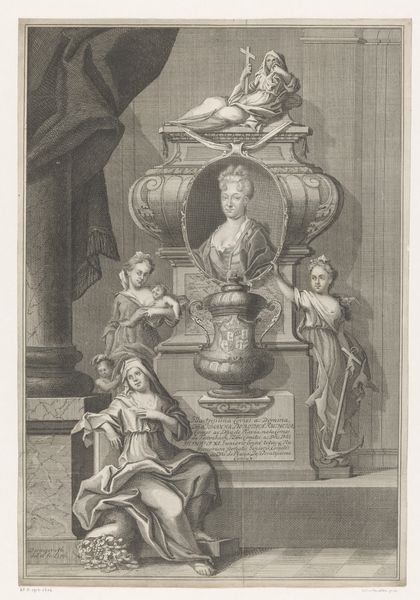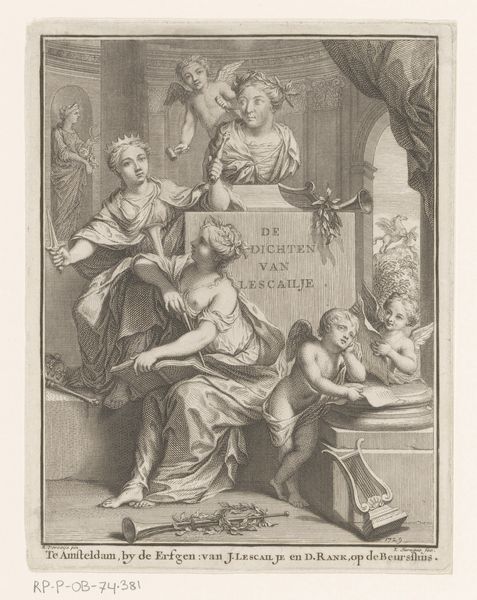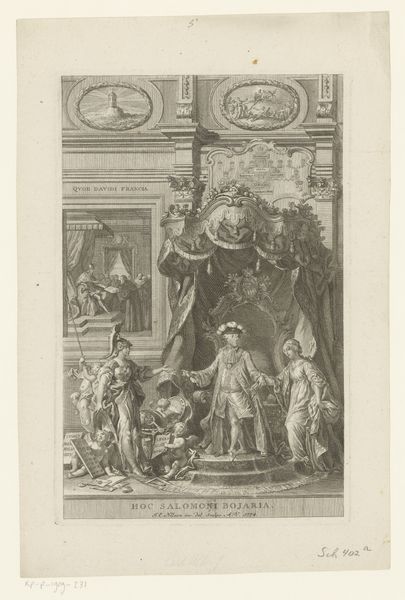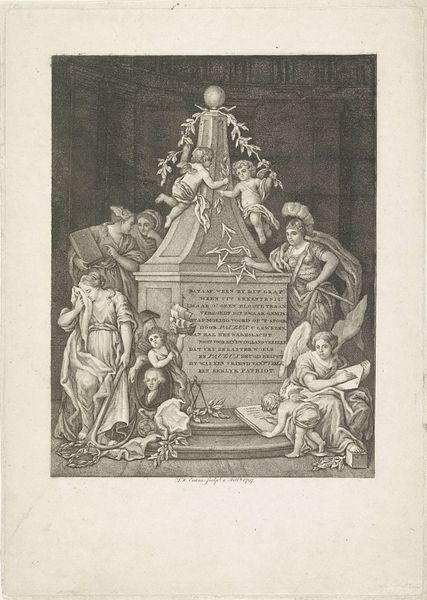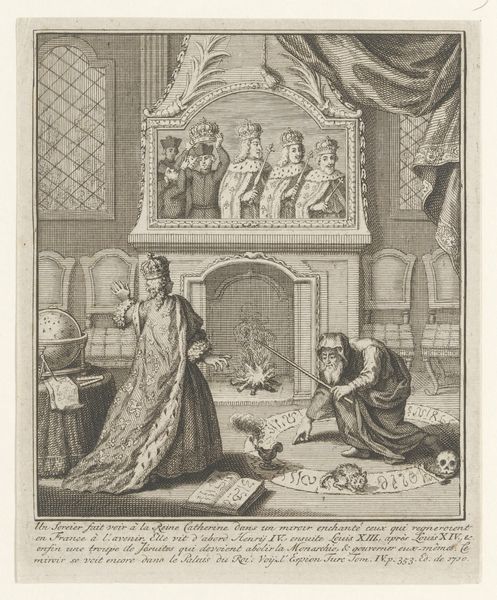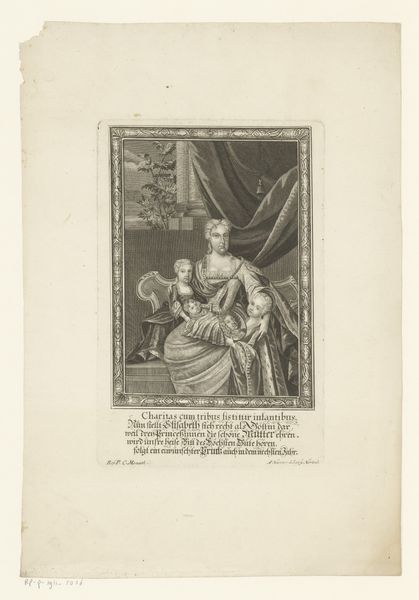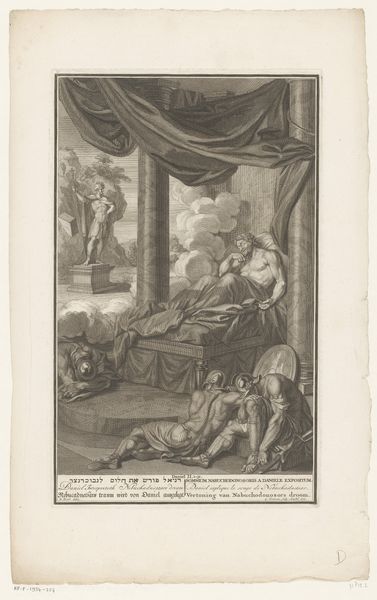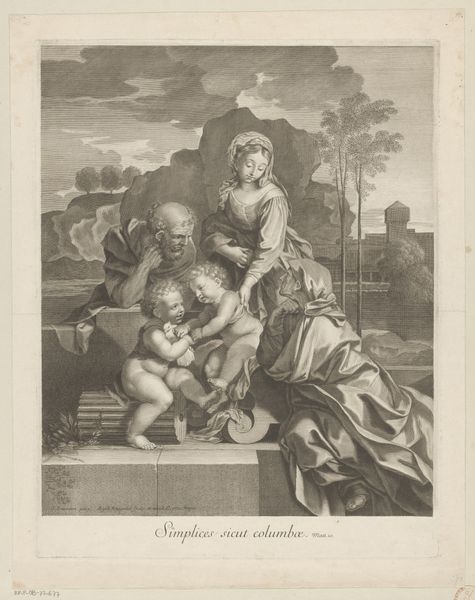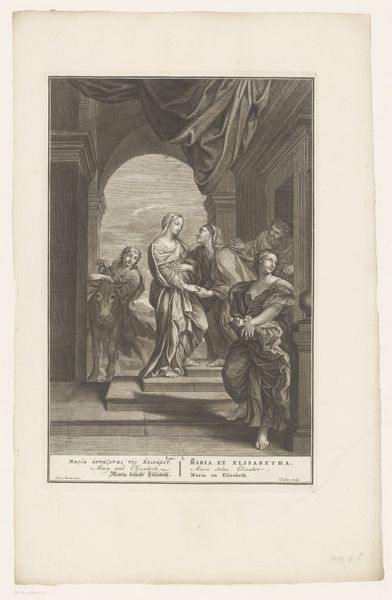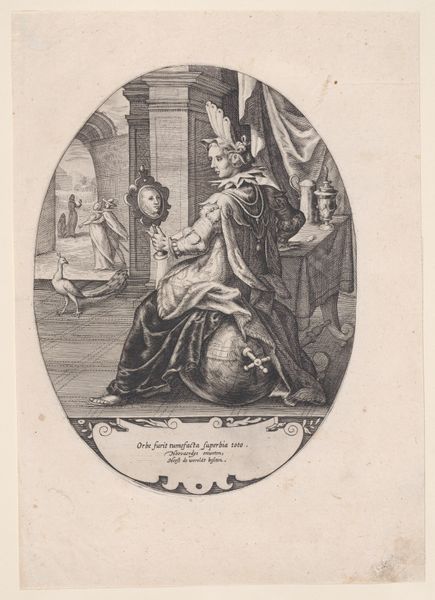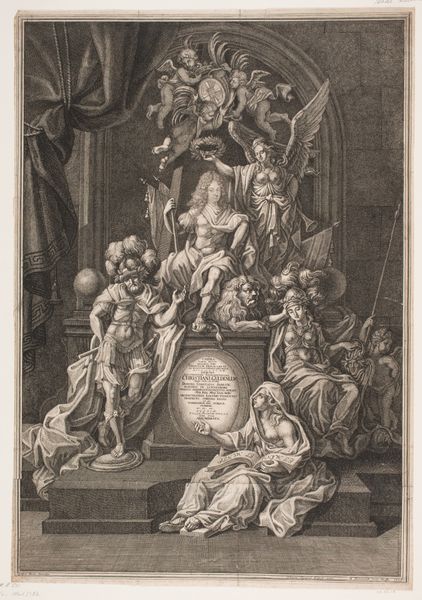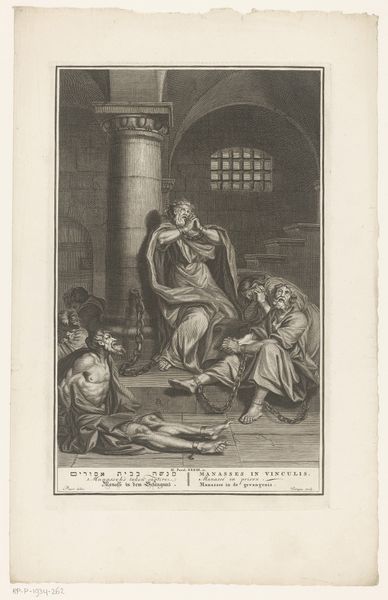
print, engraving
#
portrait
#
allegory
#
baroque
# print
#
old engraving style
#
figuration
#
history-painting
#
engraving
Dimensions: height 372 mm, width 247 mm
Copyright: Rijks Museum: Open Domain
Curator: This engraving, titled "Portret van Ott," produced between 1680 and 1733 by Martin Bernigeroth, presents an interesting study in Baroque allegorical portraiture. The work is part of the Rijksmuseum collection. What strikes you initially? Editor: The stark contrast immediately pulls my eye. The artist utilizes dense, almost textile-like hatching to define forms and textures, contrasting with the areas left relatively untouched and spare. One wonders about the tools used to carve these intricate lines. Curator: Indeed. Bernigeroth's technique emphasizes clarity of form through the use of line. Notice the strategic use of the flowing drapery which directs the viewer’s gaze towards the central portrait of Ott, lending an air of elegance and status to the figure. Semiotically, this could speak to power and prestige, visualized via very intentional graphic language. Editor: It also looks quite efficient. The cross-hatching, although highly detailed, gives me the sense that the artist worked to minimize the amount of material used, thinking economically. And then there's the question of scale. Prints afforded the possibility of replication. Was the intended effect purely aesthetic, or also propagandistic perhaps? How would it circulate? Curator: The incorporation of classical motifs certainly speaks to something beyond mere portraiture. The allegorical figures add layers of meaning. They transform what could have been a simple likeness into a complex symbolic statement. Editor: The means by which this allegory functions are crucial: Bernigeroth's engagement with labor, skill, materials—and, above all, social access—are at the very heart of his approach, blurring the lines between high art and artisan craft. One must see both production and the resulting composition together, hand in hand. Curator: Very well said. Considering the work’s formal composition and historical context alongside material considerations enhances one's interpretation of "Portret van Ott." Editor: Precisely. By investigating method and social intention, our experience with the visual form becomes much more vibrant.
Comments
No comments
Be the first to comment and join the conversation on the ultimate creative platform.
